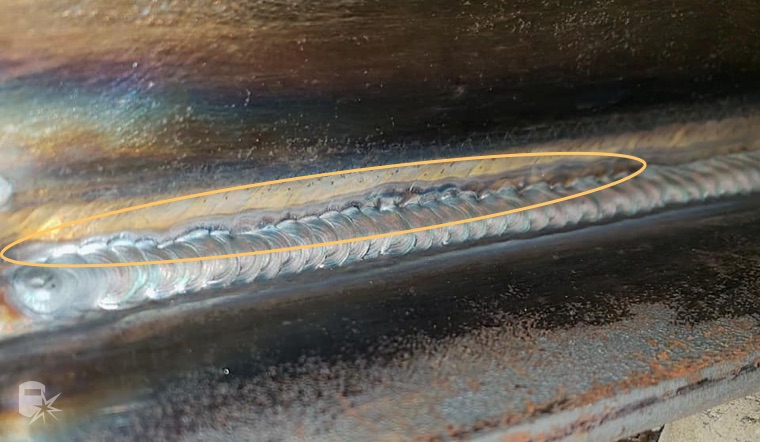Preventing Weld Undercut: Proven Techniques Every Welder Must Know
Preventing Weld Undercut: Proven Techniques Every Welder Must Know
Blog Article
Grasping the Art of Welding: Just How to Prevent Undercut Welding Issues for Flawless Manufacture Results
Performance and precision are vital worldwide of welding, where also the slightest flaw can endanger the structural integrity of a fabricated item. One common difficulty that welders face is damaging, a problem that can damage a weld joint and lead to expensive rework. By recognizing the root triggers of undercut welding and implementing efficient methods to stop it, welders can elevate their craft to new degrees of quality (Preventing weld undercut). In the pursuit of flawless construction outcomes, understanding the art of welding to avoid undercut problems is not simply an ability but a necessity for those pursuing excellence in their job.
Understanding Undercut Welding

To protect against undercut welding, welders should ensure proper welding specifications, such as adjusting the present, voltage, traveling rate, and keeping the correct electrode angle. By understanding the causes of undercut welding and executing precautionary procedures, welders can accomplish high-grade, structurally audio welds.
Sources Of Undercut in Welding
Recognizing the factors that add to damage in welding is crucial for welders to generate high-quality, structurally audio welds. Damaging takes place when the weld steel does not appropriately fill up the groove developed between the base metal and the previously transferred weld steel. Numerous aspects can cause undercut in welding. One common cause is too much warm input. Welding at heats for extended durations can cause the base metal thawing greater than preferred, resulting in undercut. Poor welding incorrect or existing welding speed can additionally add to undercut. Not enough current might not offer adequate warm to melt the base and filler steels appropriately, while extreme speed can stop proper blend, triggering undercut. Additionally, inappropriate electrode angles or incorrect lantern control strategies can produce areas of low weld steel deposition, promoting undercut. Understanding these reasons and executing correct welding methods can aid avoid damaging problems, ensuring solid and resilient welds.
Methods to stop Undercutting

To mitigate the risk of undercutting in welding, welders can employ strategic welding techniques intended at boosting the top quality and honesty of the weld joints. In addition, making use of the right welding method for the specific joint arrangement, such as weave or stringer grains, can contribute to minimizing undercutting.
Moreover, appropriate joint preparation, including ensuring tidy base products without contaminants and using the appropriate welding consumables, is essential in stopping undercut flaws. Using back-step welding strategies and controlling the weld grain account can likewise aid distribute warm evenly and lessen the danger of undercut. Regular examination of the weld joint throughout and after welding, in addition to implementing quality control measures, can assist in identifying and resolving damaging issues without delay. By carrying out these techniques carefully, welders can achieve remarkable construction results with marginal undercut problems.
Significance of Appropriate Welding Criteria
Selecting and preserving ideal welding parameters is necessary for attaining successful welds with very little issues. Welding parameters refer to variables such as voltage, present, take a trip rate, electrode angle, and shielding gas flow rate that straight influence the welding procedure. These parameters need to be meticulously adjusted based on the kind of product being welded, its thickness, and the welding strategy employed.
Appropriate welding criteria guarantee the correct amount of warm is used to thaw the base steels and filler material consistently. If the specifications are established too expensive, it can lead to excessive heat input, causing distortion, spatter, or burn-through. On the other hand, if the specifications are as well low, incomplete fusion, absence of penetration, or undercutting might happen.
Quality Control in Welding Workflow

Conclusion
Finally, understanding the art of welding needs a complete understanding of undercut welding, its causes, and techniques to stop it. By making certain correct welding specifications and executing quality guarantee methods, flawless manufacture results can be achieved. It is necessary for welders to constantly strive for quality in their welding operations to stay clear of undercut problems and produce high-grade welds.
Undercut welding, a typical problem in welding procedures, occurs when the weld steel doesn't effectively fill up the groove and leaves a groove or depression along the welded joint.To prevent undercut welding, welders must guarantee correct welding parameters, such as readjusting the current, voltage, travel rate, and preserving the appropriate electrode angle. Poor welding present or wrong welding speed can additionally contribute to damage.To mitigate the danger of undercutting in welding, welders can utilize critical welding methods aimed at boosting the quality and stability of the weld joints.In verdict, mastering the art of try this welding needs a comprehensive understanding of undercut welding, its reasons, and techniques to avoid it.
Report this page